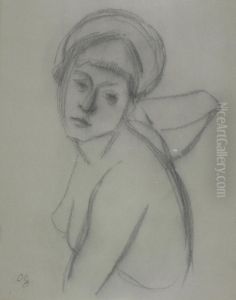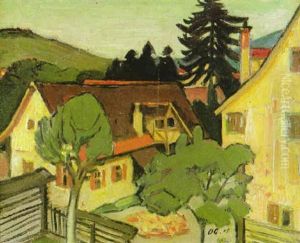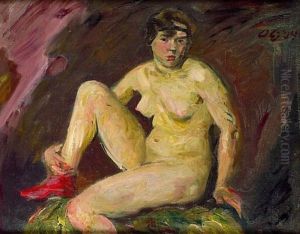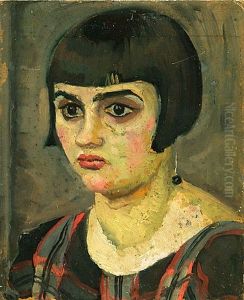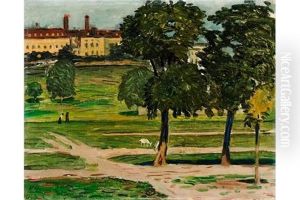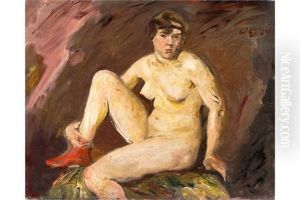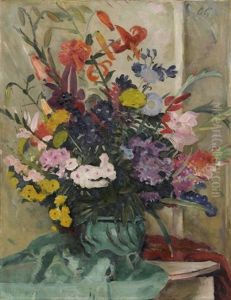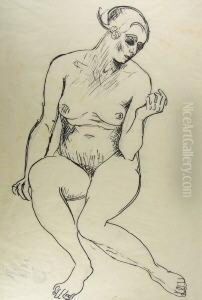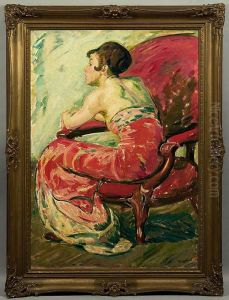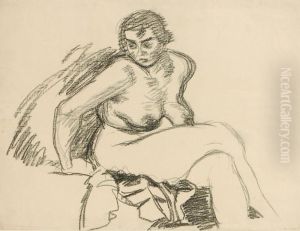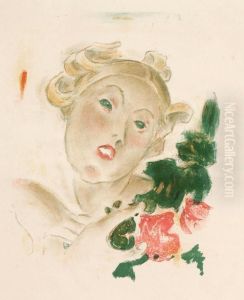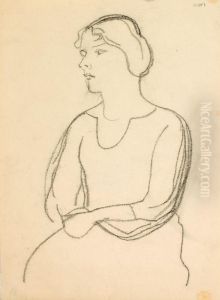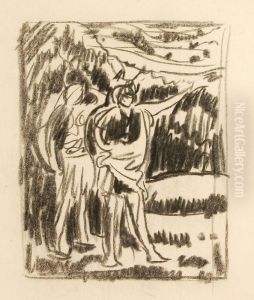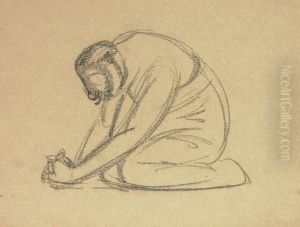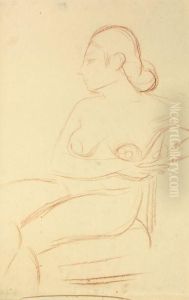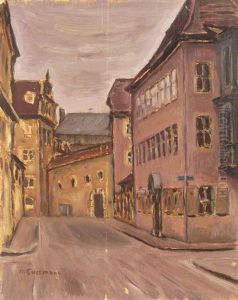Otto Gussmann Paintings
Otto Gussmann was a German artist born on February 5, 1869, in Breslau, which was part of the German Empire at the time and is now known as Wroclaw, Poland. He is most commonly recognized for his contributions as a painter, illustrator, and art professor, particularly within the Art Nouveau movement. Gussmann's work often reflected the aesthetic styles and cultural currents of his time, with a strong emphasis on decorative arts and architectural design.
Gussmann received his artistic training at the Royal Art and Trade School in Breslau before continuing his studies at the Munich Academy of Fine Arts. His education in these institutions laid the foundation for his subsequent artistic career, which was marked by a blend of traditional craftsmanship and the emerging trends of Art Nouveau.
As an academic, Gussmann succeeded in securing a position at the Dresden Academy of Fine Arts, where he worked as a professor from 1904 until his death in 1926. His tenure at the academy was influential, as he guided a generation of young artists and contributed to the development of the academy's curriculum and prestige.
Throughout his career, Gussmann was involved in various significant projects, particularly in the field of mural painting and interior decoration. One of his notable works was the design and execution of the murals for the Dresden Court Church, which displayed his command of large-scale compositions and his ability to integrate his work within architectural spaces. His expertise in murals was also showcased in various other public and private buildings, where he applied his skills to create harmonious and aesthetically pleasing environments.
Gussmann's style was characterized by a focus on natural forms, stylized figures, and flowing lines, which were typical of the Art Nouveau movement. His illustrations and graphic works often featured floral motifs, allegorical scenes, and elements inspired by mythology and nature, reflecting the era's fascination with organic forms and intricate patterns.
Otto Gussmann's legacy as an artist and educator has been preserved through his works, which continue to be appreciated for their beauty and historical significance. His contributions to the field of decorative arts and his role in shaping the careers of other artists have made him a notable figure in the history of German art. He passed away on June 20, 1926, in Loschwitz, a part of Dresden, leaving behind a body of work that continues to be studied and admired.
